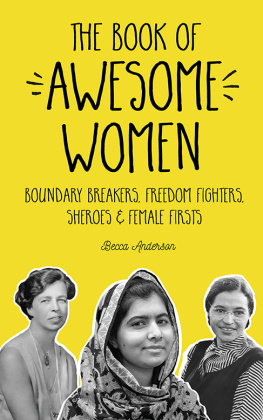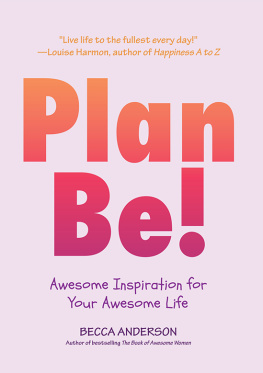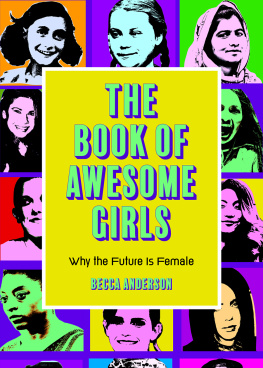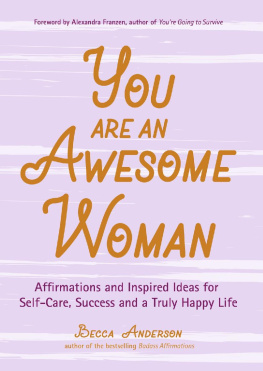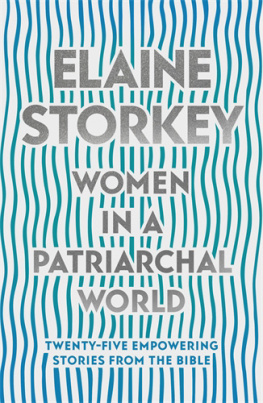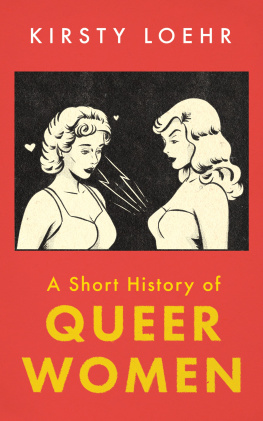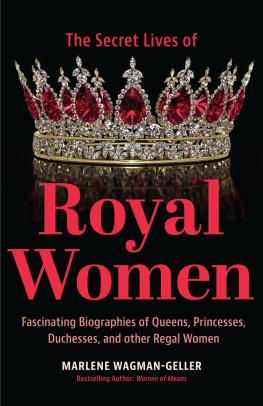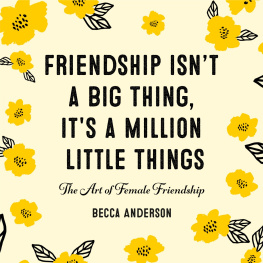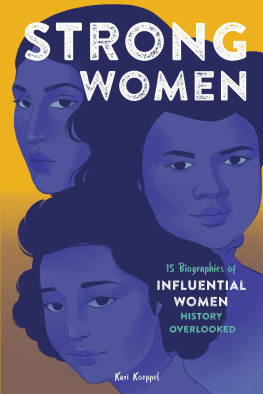
Copyright 2017 Becca Anderson.
Published by Mango Publishing Group, a division of Mango Media Inc.
Cover Design and Layout Design: Elina Diaz
Mango is an active supporter of authors rights to free speech and artistic expression in their books. The purpose of copyright is to encourage authors to produce exceptional works that enrich our culture and our open society.
Uploading or distributing photos, scans or any content from this book without prior permission is theft of the authors intellectual property. Please honor the authors work as you would your own. Thank you in advance for respecting our authors rights.
For permission requests, please contact the publisher at:
Mango Publishing Group
2850 Douglas Road, 3rd Floor
Coral Gables, FL 33134 USA
For special orders, quantity sales, course adoptions and corporate sales, please email the publisher at or +1.800.509.4887.
The Book of Awesome Women: Boundary Breakers, Freedom Fighters, Sheroes and Female Firsts
Library of Congress Cataloging
ISBN: (paperback) 978-1-63353-583-1, (ebook) 978-1-63353-584-8
Library of Congress Control Number: 2017909207
BISAC category code : HIS058000 HISTORY / Women
Printed in the United States of America
Table of Contents
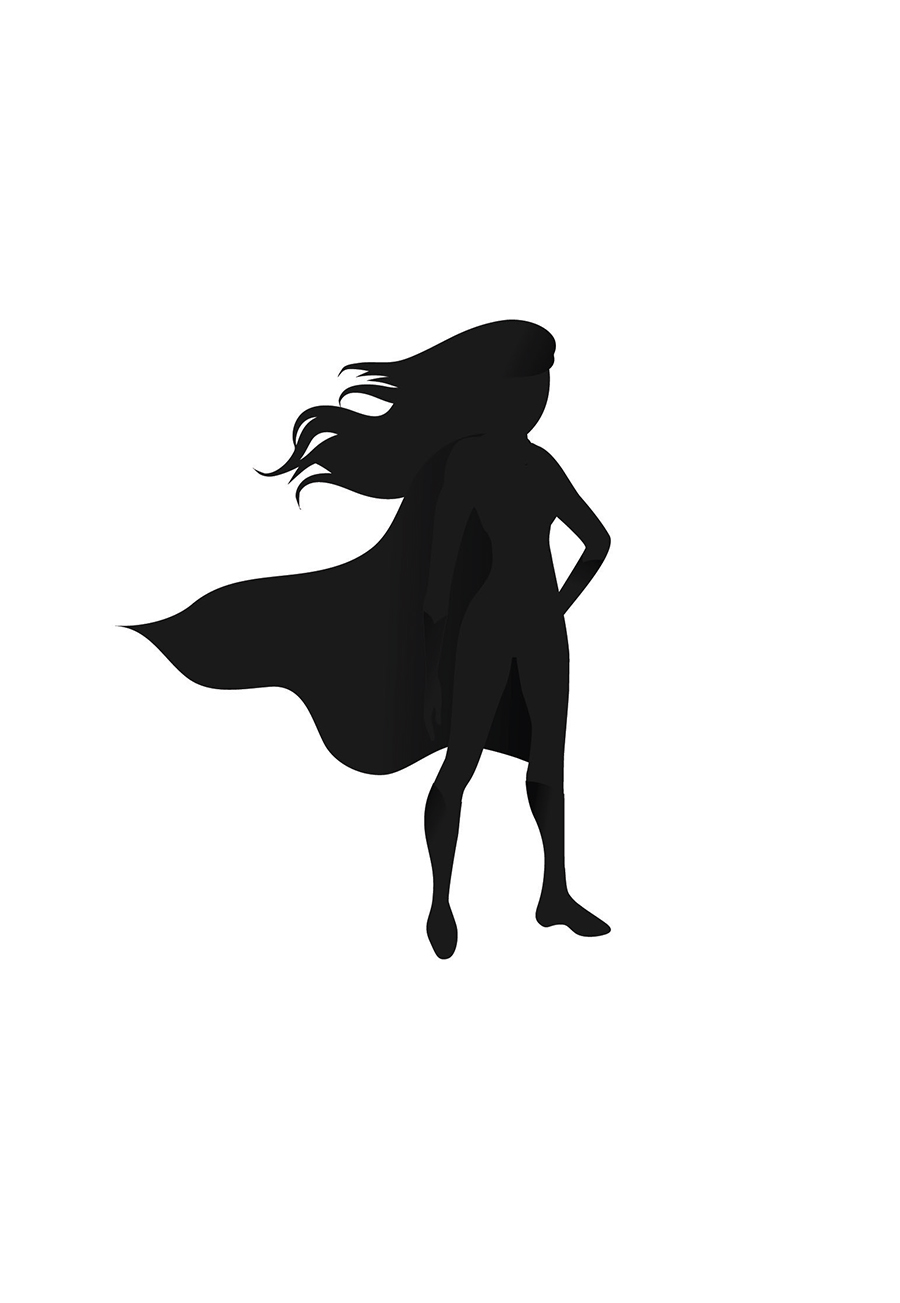
T he courage of women moves me. This power only women have turned out to be the prime mover of my life, and for me, it was the words of women which raised me up and inspired me to have the courage to be a writer. One of the moments I felt this kindling was when my mother took me to see Lorraine Hansberrys A Raisin in the Sun , a pivotal and moving episode in my life that remains with me still. This nurtured and encouraged my own creativity. The work of this successful woman of color, who shared her message with audiences all over the country, and later, all around the world, became the foundation upon which my personal creativity was developed. As I read and studied and learned more, I came to discover that a former African slave was one of the first women to be published in Colonial America. What courage there! But, it is not just women of color who bucked the tide of society and kept striving for all of us who came after, it is every woman who worked, both in and out of the house. Every women who marched for the vote, who rode the buses for civil rights and dared to sit in any seat. Every woman who didnt listen when she was told she couldnt do math or fly a plane or be an astronaut or a scientist or an athlete. Thank goodness these women didnt listen to anyone but themselves. They listened to their own hearts. They heard a call to greatness and listened. It is all of us, flowing like a river and rising like the tide unstoppable. So many of these women made hard choices and took a bet on the future, more for us than for themselves. They were largely overlooked and ignored by historians. And this is why I love books like this that bring forth those women who bravely forged our future. Bravo to great women!
Ntozake Shange, poet, novelist, performer, and playwright, who wrote the Broadway-produced and Obie Award-winning For Colored Girls Who Have Considered Suicide/When the Rainbow Is Enuf

T he Book of Awesome Women provokes a question Ive asked myself dozens of times: Where was this treasurehouse of a book when I went to school? From the first grade on, I sat at my desk, listlessly listening to the cliched tales of heroes from history, all of themor so it seemedmale. Meanwhile, as I grew up in the Pacific Northwest of the fifties, many of the women profiled in this book were busy making history, making changes, making intellectual contributions, and making waves. Did I hear about any of them in school? In the media? On that shiny new world of communications called television? Rarely, if ever.
Would my life have been different if Id had these daring examples to aspire to, to take courage from, to lean on as my own personal support group from history? Most definitely.
For instance, when my mother and father pushed me toward a particular college, I asked what they saw me doing with my education, and they said, A nurse, perhaps. Or a teacher. I turned angrily from their narrow vision and their well-meant path of higher education. It was decades before I saw the learning (as valid when enrolled in the university life as well as in more traditional institutions) would set me free, free to become whatever I set my mind to be.
Over the years, as I made my way as a writer and researcher, many of the sheroes in this book became my personal sheroes, too. The lives and deeds of women like Mary Leakey, Karen Silkwood, Margaret Mead, Rachel Carson, and Eleanor Roosevelt moved me deeply and helped me grow. As a thirtysomething college reporter, for instance, I got to write my first news story about Billie Jean Kings rout of Bobby Riggsand in so doing, the sheer audacity of Billie Jeans actions struck home. The Book of Awesome Women brings all of my favorite women, and hundreds more, to luminous lifea brilliant and encyclopedic achievement for one book.

Of late, Ive been thinking a lot about just how and why the jigsaw of our whole human history came to have so many female pieces missing. Since 1995, the publication date of Uppity Women of Ancient Times , my first book about real-life female achievements of long ago, I have given hundreds of lectures, workshops, and talks to audiences about the frisky, risk-it-all women from our ancient, medieval, and Renaissance past. I point out that many of these trailblazers were famousor infamousin their own day. Invariably, someone in the audience asks: If these women were household words, how and why did they become invisible?
At this point, I mention a trio of female names and say: What do these names mean to you? After having given this pop quiz to several thousand people now (many of them well-read women whose educations far exceed my own), I regret to say that no one has known the answers. No one. Not one person has identified three key women who I selected at random from our own, very recent American history.
This responseor lack of oneleads me to my most telling point. You see? Even in the late twentieth century, the historical invisibility process often begins immediatelyin a womans own lifetime.
The Book of Awesome Women , is a perfect antidote to that process, a bold and colorful portrait of women who dared to pursue their dreams. In that pursuit, they themselves become raw material, the idea matrix for other womens dreams. They become, in a word, sheroesa word, and a notion, whose constituency is going to grow ever more clamorous in the brave new second millennium.
Vicki Leon, author of the Uppity Women in history series , published by Conari Press.
P.S. Take my invisible women quiz yourself and see how well you do. Identify the following twentieth century women: Junko Tabei, Sally Louisa Tompkins, and Gerti Cori.
Answers: Junko Tabeifirst woman to climb Mount Everest, on May 16, 1975. This housewife led an all-woman Japanese team to the top. Sally Louisa Tompkinsonly woman to be named an officer in the Confederate Army, where she ran the hospital shed already established (at her own expense) with the lowest mortality rate of any soldiers hospital in the South. Gerti Corifirst female doctor to win a Nobel prize; awarded in physiology and medicine in 1947 and shared with her husband.
Next page
